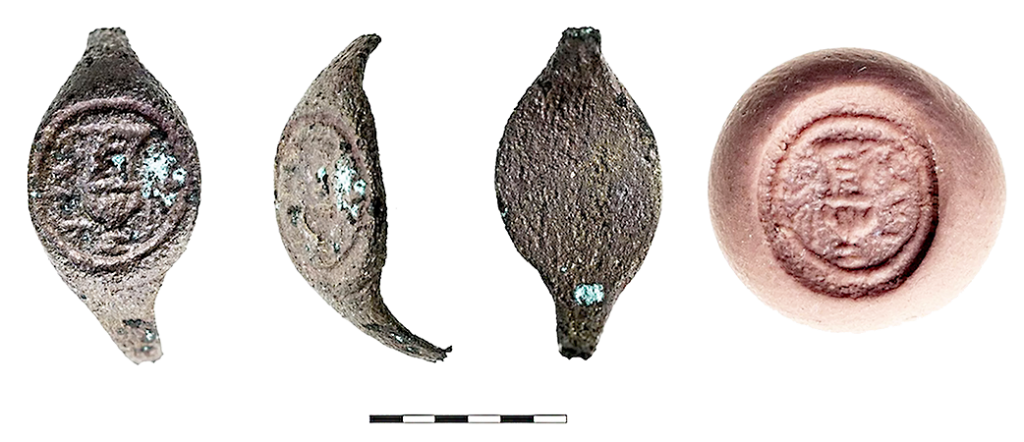
Bible, History, Archaeology
Bible,
History,
Archaeology
Pontius Pilate,
a ring?
A ring «of metal made of copper alloy», dating back some 2,000 years, bearing an engraved Greek inscription «from Pilatus» has been unearthed in the West Bank. It was found in 1968-1969 during excavations at the Herodion, a palace-fortress built by King Herod, some 5 km southeast of Bethlehem.
A Pontius Pilate ring?
This ring appears to have belonged to Pontius Pilatus, the Roman prefect of Judea who, according to the Bible, pronounced the sentence of crucifixion on Jesus of Nazareth. According to Israel Exploration Society and the Institute of Archaeology of the Hebrew University of Jerusalem, the team of scientists who studied the ring believe it could also have been worn by another person.
The discovery of the ring inscription

The ring's design and archaeological context suggest that it could have been made between the first century BC and the middle of the first century AD.
Image opposite: side and transverse views of the seal that may have belonged to Pontius Pilate. And its design. Drawing: j Rodman/Photos C. Amit, IAA Photographic Department, via Hebrew University.
Researchers believe that this ring worn on the finger could be pressed onto a malleable material, such as wax or clay, to create a seal affixed to a document or object. Rings like these were commonly used by notables in ancient times.
Who could have worn this ring?
The name «Pilatus» is a rare one in the Roman world, and previous archaeological research has shown that part of the Herodium was used when Pontius Pilate was Prefect of Judea. For this reason, researchers cannot dismiss the possibility that the ring was used by the prefect.
Some objections

Image opposite: the drawing with its inscription. Drawing: j Rodman/Photos C. Amit, IAA Photographic Department, via Hebrew University.
Another difficulty is that, in addition to the inscription, the ring bears the image of a handleless «crater» (a type of ancient Greek vase), a vessel used for mixing water and wine. Craters« were often used in Jewish art around 2,000 years ago and would be an unusual choice for a Roman prefect.
While the person wearing this ring was not Pontius Pilate, it is possible that the wearer had an indirect connection with the Roman prefect. This could have been a member of Pilate's administration, a freed slave or a member of his family. It's also possible that the wearer had no connection at all with the famous prefect, and simply shared the same surname.
The only other piece of evidence to date bearing Pontius Pilate's name and dating from the time when he was stationed in Judea, is a stone discovered at Caesarea Maritime, states on its website the Israel Museum in Jerusalem, whose collection includes the said stone.
